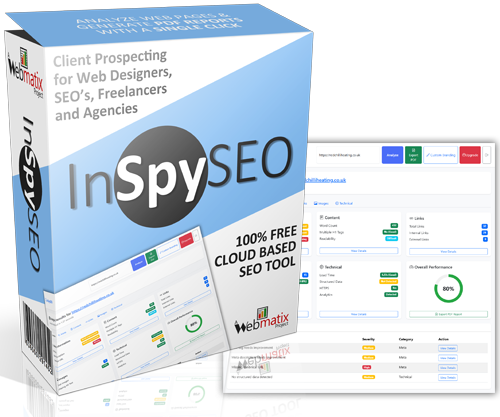Examples of Marketing Automation Use Cases
In today’s fast-paced digital world, marketing automation has become essential for businesses seeking to streamline their marketing efforts. By automating repetitive tasks, companies can save time, enhance customer engagement, and boost overall efficiency. In this article, we’ll delve into various examples of marketing automation use cases that can help businesses of all sizes. Whether you’re a small startup or a large enterprise, understanding these use cases can guide you in implementing effective automation strategies.
What is Marketing Automation?
Marketing automation refers to the use of software platforms and technologies to automate repetitive marketing tasks. This includes email marketing, social media posting, ad campaigns, and more. The goal is to improve efficiency and increase conversion rates while providing a personalized experience for customers. Below, we’ll explore specific use cases that illustrate how businesses can leverage marketing automation.
1. Email Marketing Campaigns
Email marketing remains one of the most effective channels for reaching customers. With automation, businesses can:
- Segment Audiences: Automatically categorize contacts based on their behavior or demographics.
- Personalize Content: Send tailored messages that resonate with individual preferences.
- Schedule Emails: Set specific times for emails to be sent, ensuring they reach recipients when they are most likely to engage.
For example, an e-commerce store can use marketing automation to send personalized product recommendations to customers based on their past purchases. This not only increases the chances of conversion but also enhances the customer experience.
2. Lead Scoring and Nurturing
Identifying and nurturing leads is crucial in the sales process. Marketing automation allows businesses to:
- Score Leads: Assign values to leads based on their interactions with your content.
- Automate Follow-ups: Send timely follow-up emails to leads who show interest in your products or services.
- Drip Campaigns: Nurture leads over time with a series of automated emails that educate and engage them.
For instance, a software company can implement lead scoring to prioritize leads that have engaged with multiple resources, such as webinars and case studies. This allows the sales team to focus on the most promising prospects.
3. Customer Onboarding
Welcoming new customers is vital for retention. Marketing automation can streamline the onboarding process by:
- Automating Welcome Emails: Send an immediate welcome email with resources and next steps.
- Providing Tutorials: Automatically deliver relevant tutorials or guides based on the customer’s profile.
- Gathering Feedback: Send surveys to new customers to gather insights on their onboarding experience.
For example, a subscription service can automate a series of onboarding emails that guide new users through the setup process, helping them get the most out of the service while reducing churn rates.
4. Social Media Management
Managing social media can be time-consuming, but marketing automation can simplify the process. Here’s how:
- Scheduled Posts: Automate the posting of content at optimal times for engagement.
- Monitoring Mentions: Automatically track brand mentions and engage with customers in real-time.
- Analytics Reporting: Generate automatic reports to analyze social media performance.
For instance, a restaurant can use automation tools to schedule daily posts about special offers and events, ensuring their social media presence remains active without constant manual effort.
5. Event Promotion
Events are a great way to engage customers, and marketing automation can enhance the promotion of these events by:
- Automated Invitations: Send personalized invitations to segmented lists.
- Reminders: Automatically remind attendees as the event date approaches.
- Follow-up Surveys: Gather feedback post-event to improve future events.
A great example is a conference organizer who can automate the entire process from sending invitations to collecting feedback after the event, making it easier to manage and ensuring better attendee experiences.
6. E-commerce Abandoned Cart Recovery
Abandoned carts are a common issue in e-commerce. Marketing automation can help recover lost sales by:
- Triggering Reminder Emails: Automatically send emails to remind customers of items left in their cart.
- Offering Discounts: Provide incentives for customers to complete their purchase.
- Personalizing Messages: Tailor reminders based on the items in the cart or previous purchases.
For example, an online clothing store can set up an automated system that sends a reminder email 24 hours after a cart is abandoned, offering a discount on the items left behind, significantly increasing conversion rates.
7. Customer Feedback and Surveys
Understanding customer satisfaction is critical for any business. Marketing automation can facilitate:
- Automated Feedback Requests: Send automated emails asking for feedback after a purchase or interaction.
- Custom Surveys: Automatically distribute surveys to collect valuable insights from customers.
- Analyzing Results: Use automated tools to analyze feedback and identify trends.
For instance, a hotel chain can automate the process of sending surveys after guest stays, allowing them to quickly address any issues and improve their services based on customer feedback.
Conclusion
Incorporating marketing automation use cases into your business strategy can lead to improved efficiency, better customer engagement, and increased sales. By automating processes like email campaigns, lead nurturing, social media management, and customer feedback, businesses can focus on what truly matters—building relationships and driving growth. Implementing these examples of marketing automation can help you stay competitive in today’s digital landscape, ultimately leading to more successful marketing outcomes.

Leave a Reply